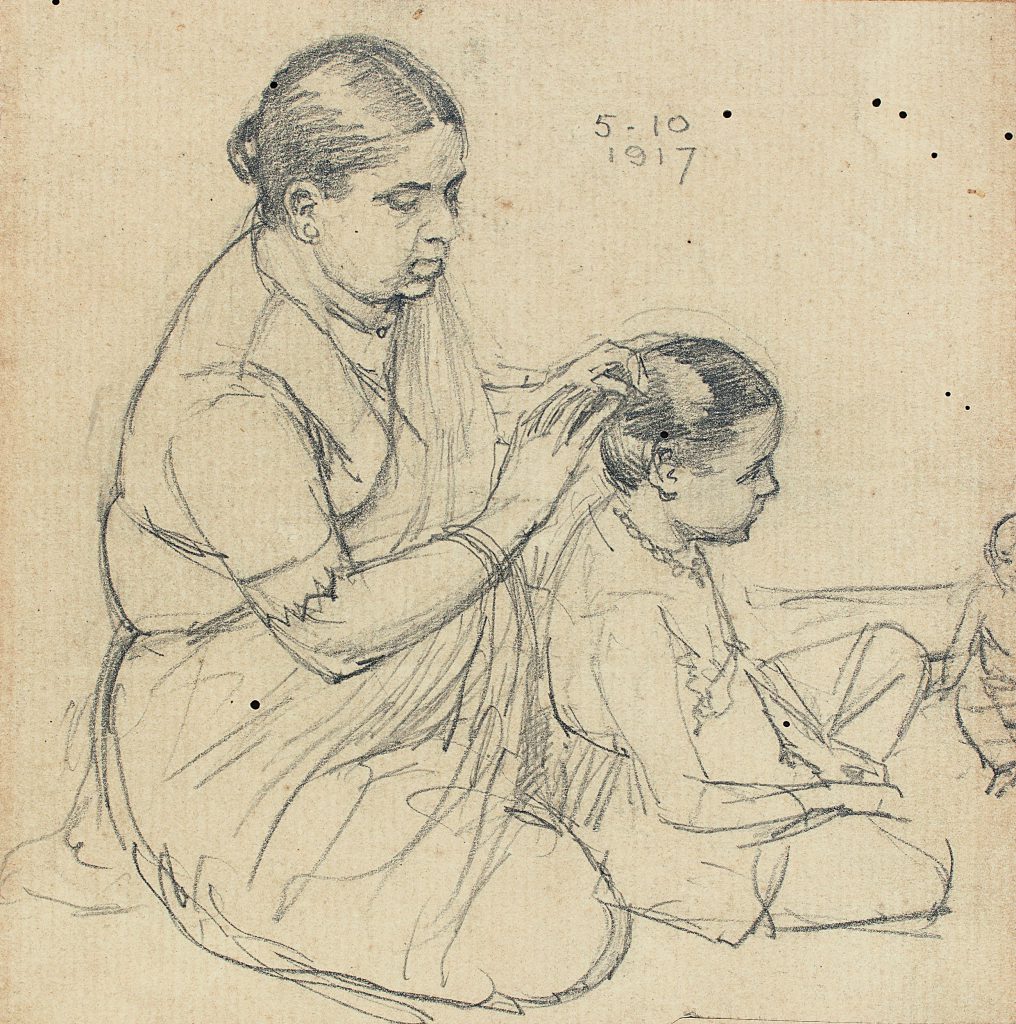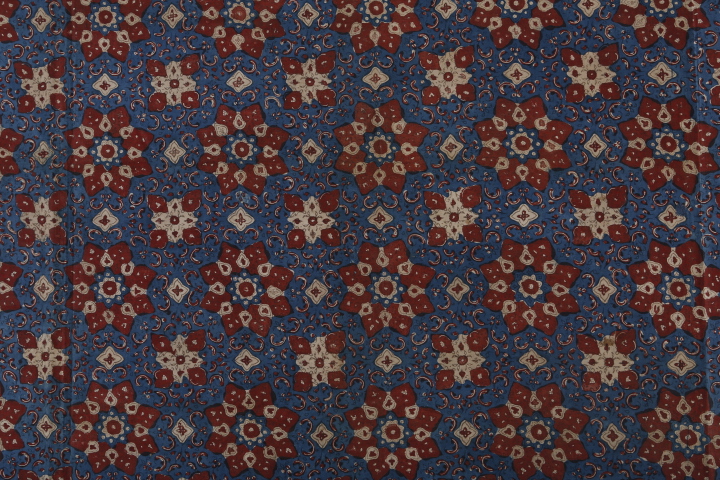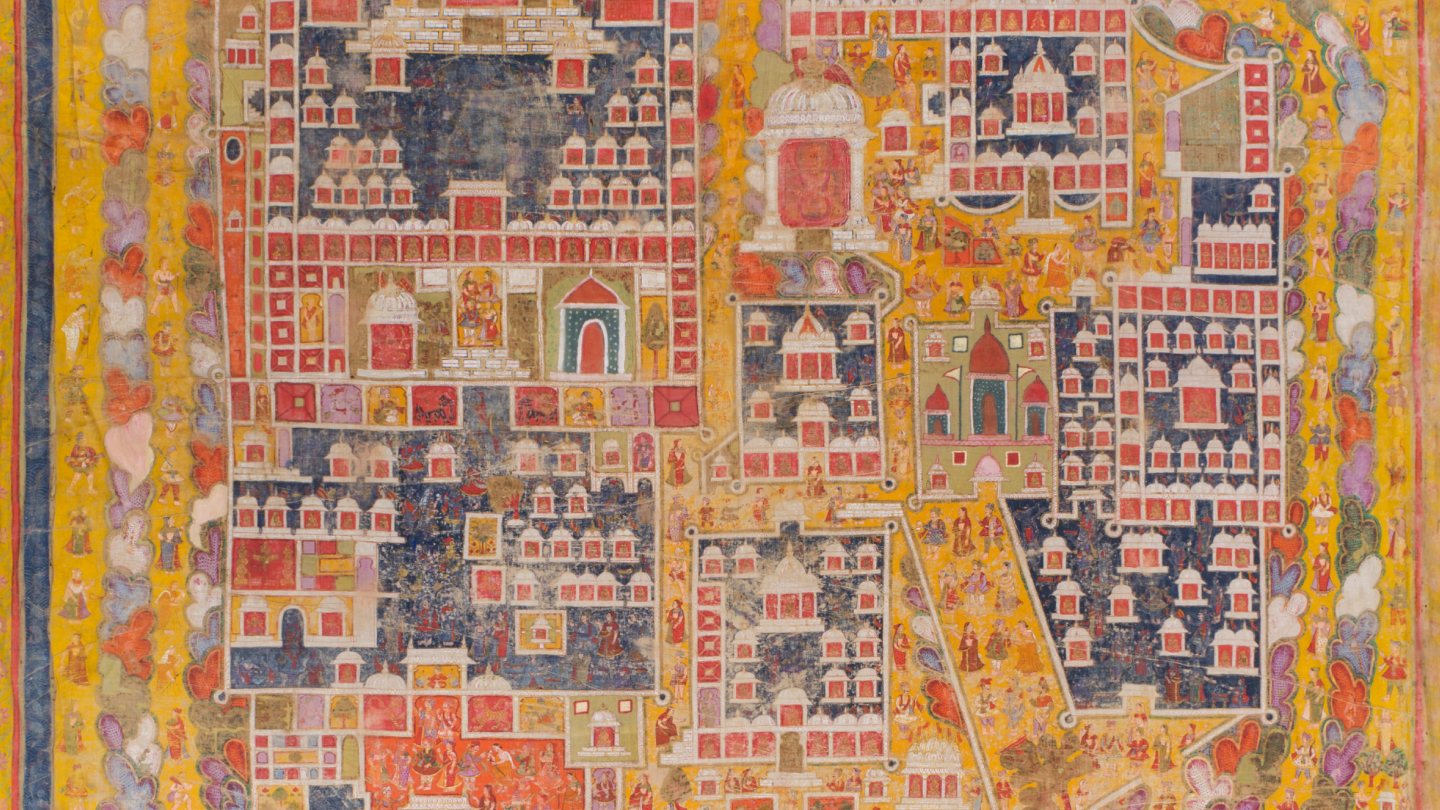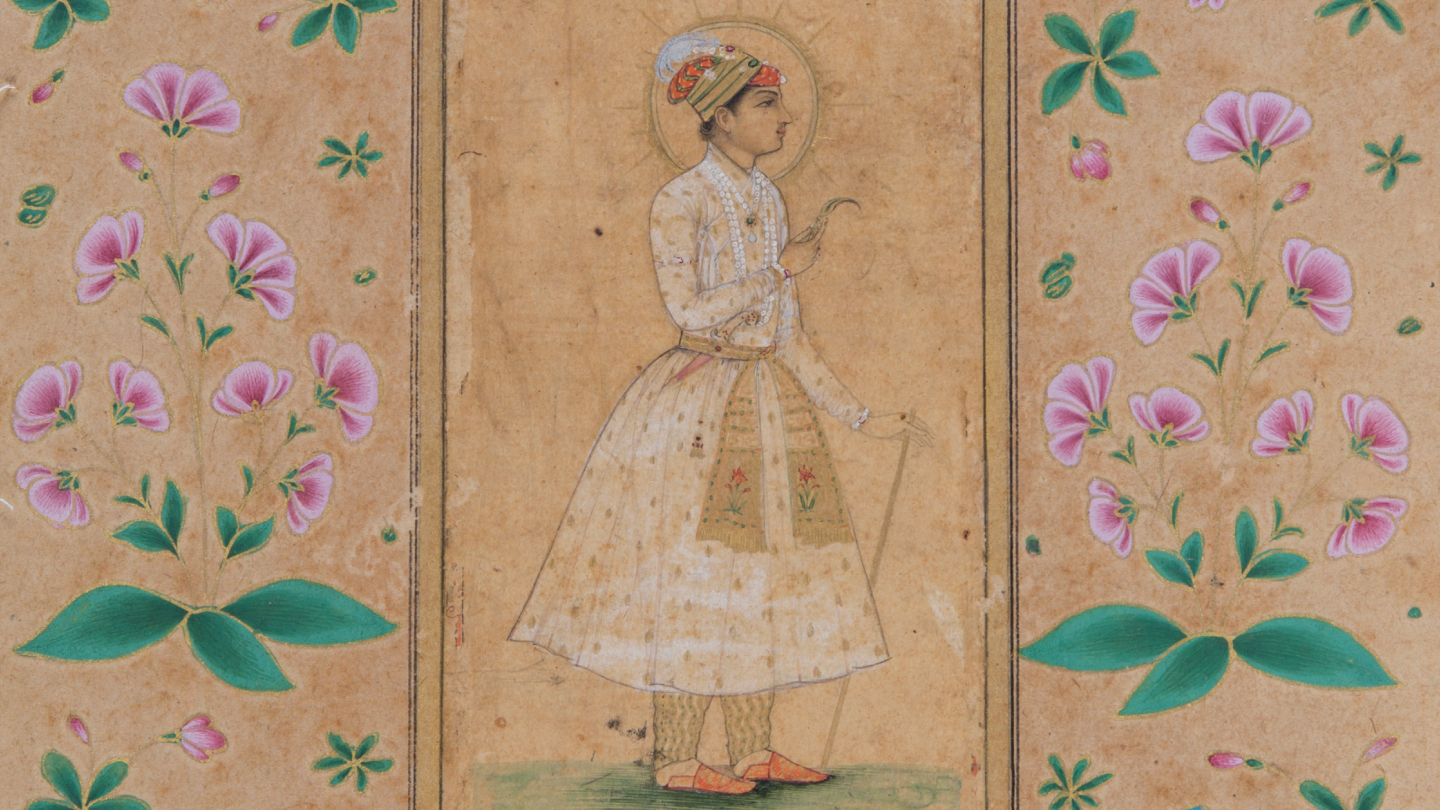Blogs
Why I Love Art: Tracing my Mother And Leisure in M.V. Dhurandhar’s Sketch
Isheeta Sharma
A writer reflects on her relationship with her mother and how they found leisure in a simple activity.
As a child I don’t recall seeing my mother at rest. Her body and mind were always in a state of flux – moving from one place to another, from one task to the next. A few months ago, while researching M.V. Dhurandhar’s art for an academic project, I stumbled onto his sketches from the series titled My Wife in Art and in one particular sketch, I found my mother.
This 1917 sketch depicts a mother oiling her daughter’s hair. Immediately, as if the memory was waiting for this moment, I envisioned my mother and I sitting on our rooftop on winter afternoons. She would drag a moodha (wicker stool) and place herself on it while I would drag a chatai (a mat) and sit cross-legged, much like the little girl in the sketch. With a bowl full of moongfali (peanuts) by our side, we’d begin the process of oiling and braiding my hair, all the while chatting. It is through these afternoons that I first began to discover her as more than just my mother. Her fingers would slather oil onto my scalp as we’d travel to her college days – she’d paint pictures of the friends she lost contact with, of the bike she learned to ride, of the classes she bunked, the haircuts she experimented with and the college canteen and its steaming cup of chai.

A drawing from M.V. Dhurandhar’s sketchbook, My Wife in Art, 1917, Collection: DAG, Image Courtesy: DAG.
On one of these days she narrated how she tackled a man in a bus, held him by his ear and dragged him to the police station. On other days, after much coaxing, my mother would speak of the days when she met my father – their secret meetings at bus stops, and memories of letters they wrote to each other. One of her favourite memories was of my father waiting for hours at a bus stop for her to arrive. “And now he can’t even wait for five minutes,” she would say, rolling her eyes.
It wasn’t just her who used these moments for confessions. I told her about my feelings for a classmate on one such afternoon. Although I felt her fingers falter for a second, she kept on braiding my hair – almost as if the continuation of activity would mean continuing the conversation.
One of my most vivid memories of these afternoons is when I was in my teens and my mother and I had had an argument right before she asked me to follow her upstairs for our ritual oiling session. Grudgingly, I followed her and for the entire time we didn’t speak to each other but there was something about the movement of her fingers that seemed to calm both of us down. Dhurandhar’s sketch reminds me of that bittersweet afternoon. Although the mother and daughter in the sketch don’t seem to be speaking, they are intimately connected by the moment they share.
I never saw these moments as moments of rest, for my mother’s mouth and fingers were still moving. My imagination of rest was also different. Rest was supposed to be solitary. However, the more I looked at Dhurandhar’s sketch, the more leisure I discovered in it. The focus on the mother and daughter seems to almost cut them off from the rest of the world. Even the young child seems to be disappearing from the frame. Sitting under the sun away from the hubbub of the household downstairs, my mother and I would also be momentarily disconnected. There was a rhythm to the movement of her fingers on my scalp – oiling, massaging, braiding – that was almost like the beating of drums before a storytelling session. Perhaps our leisure in these moments was found in each other’s company – when we were two women travelling back and forth in time, discovering each other outside of the social relationship we shared.
I showed my mother Dhurandhar’s sketch while writing this article. She smiled and said, “I used to do this with you too”. Winter is approaching in a few months, perhaps we’d head back to the terrace again and this time I’d be the one braiding her hair.
Isheeta is a features writer and a student of Gender Studies at Ambedkar University, Delhi. She enjoys dissecting popular culture through a gendered lens, adding new books to her overflowing book rack and sipping coffee in quiet corners.








